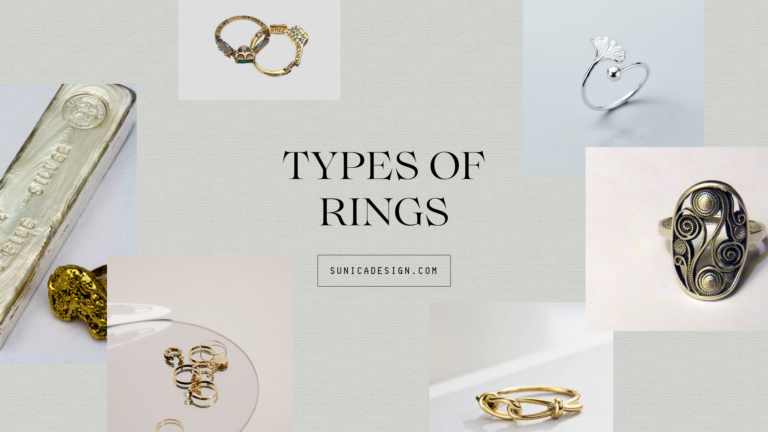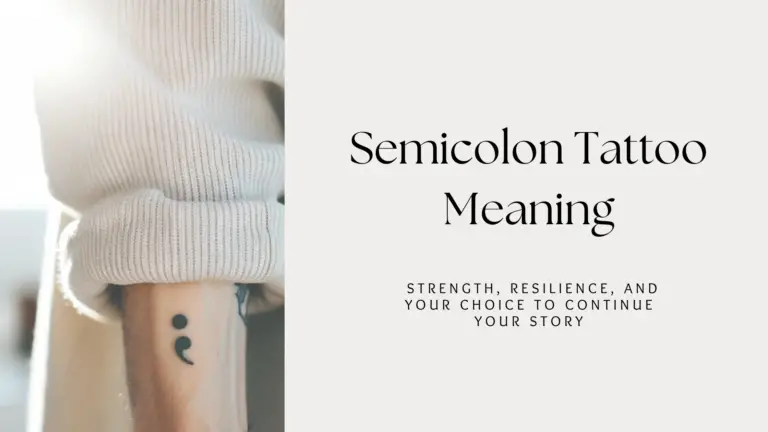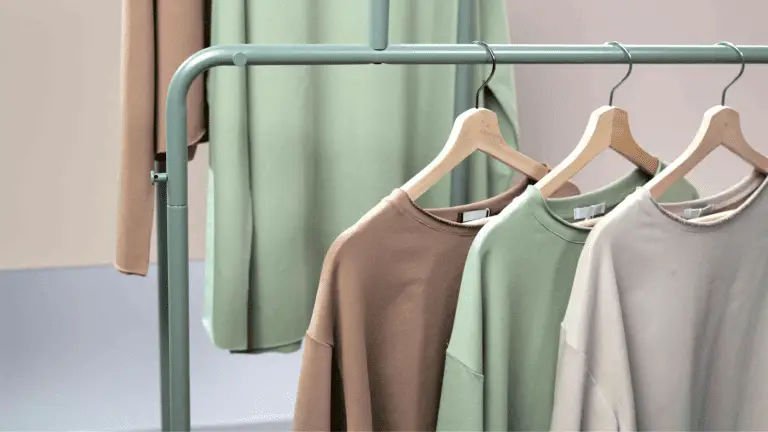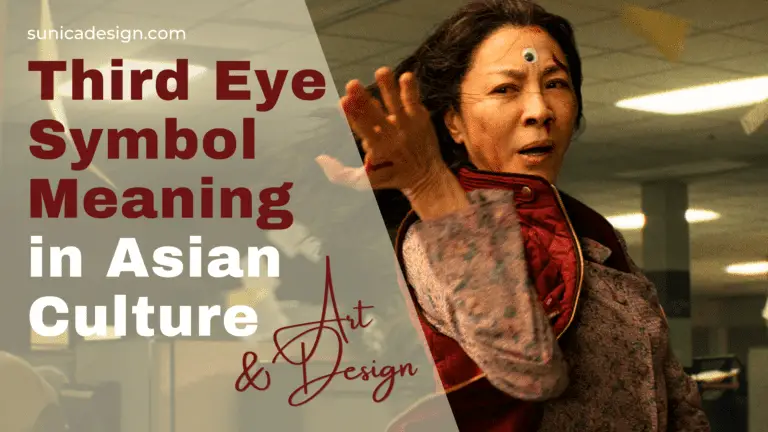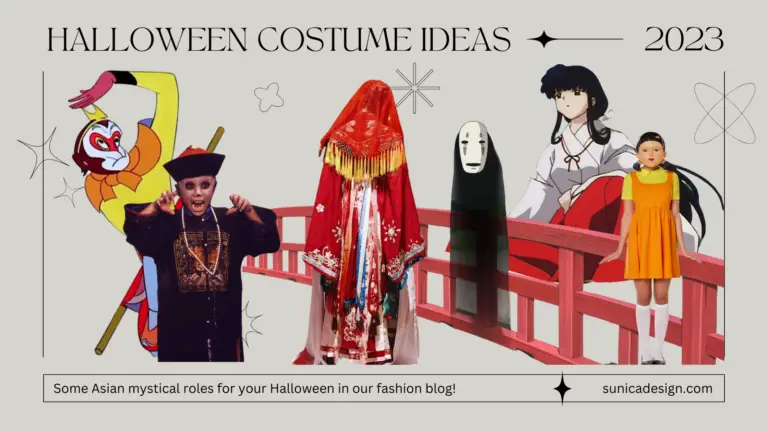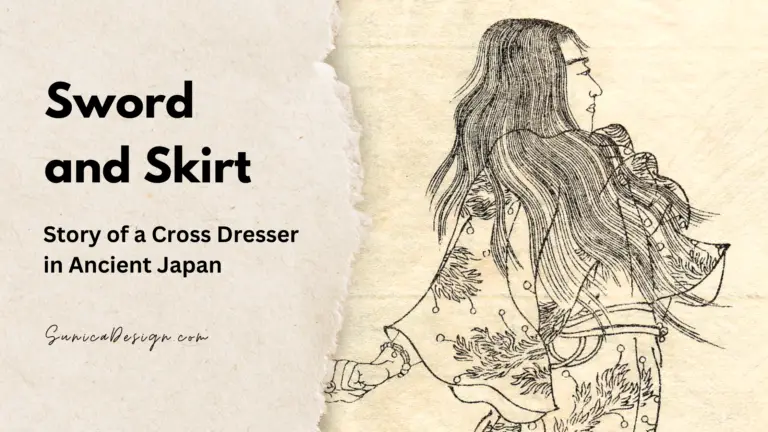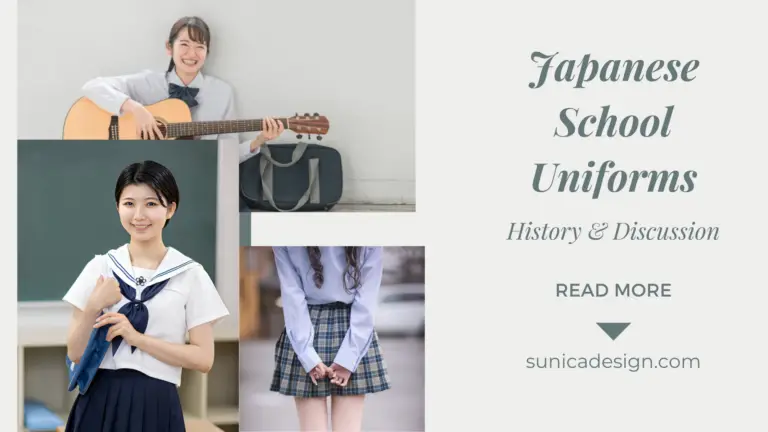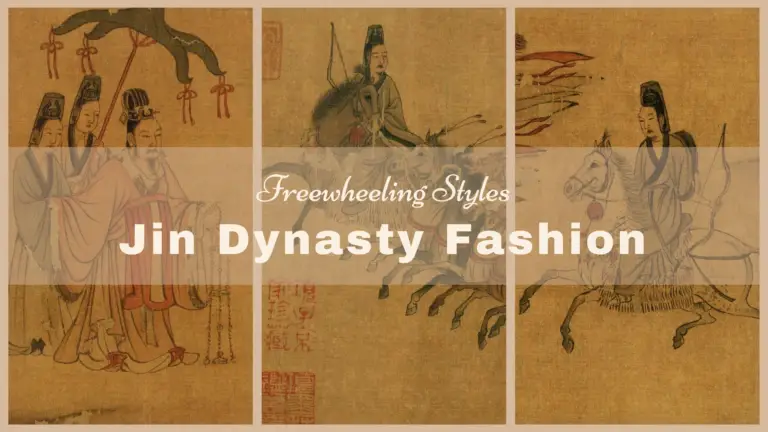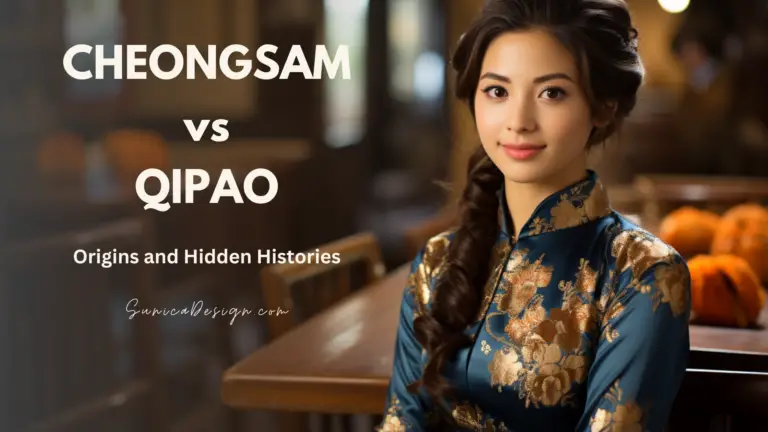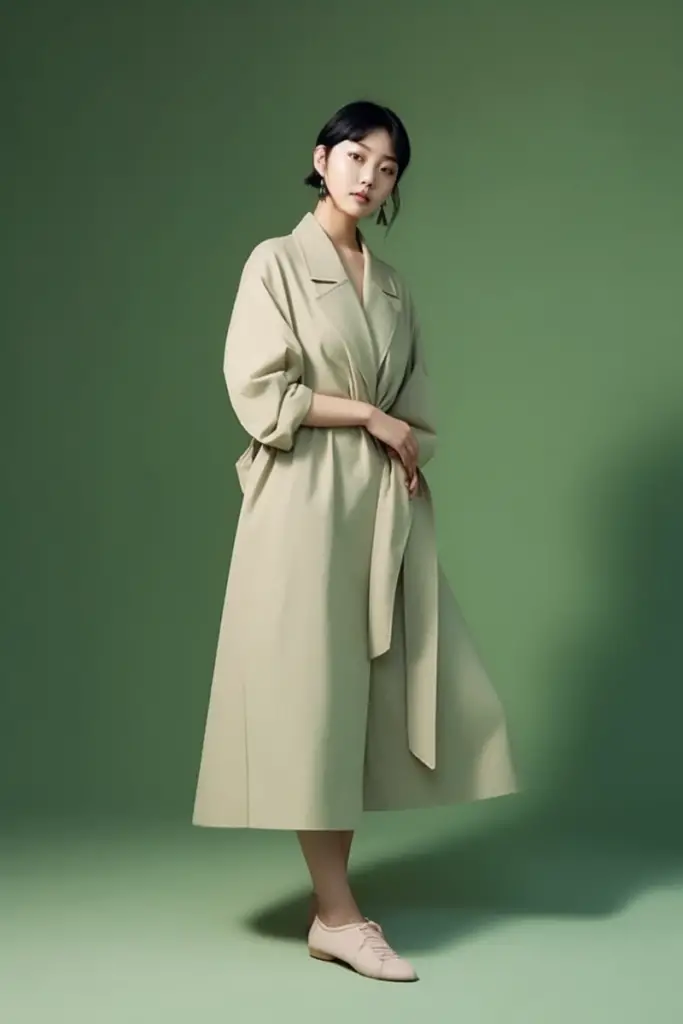Weddings are a celebration of love, unity, and the coming together of two families. But when it comes to attire, the rules can get a little tricky—especially when cultural traditions come into play. You might wonder, can you wear red to a wedding? Well, the answer isn’t as straightforward as you might think. Stick around as we delve into the fascinating world of Japanese wedding traditions.
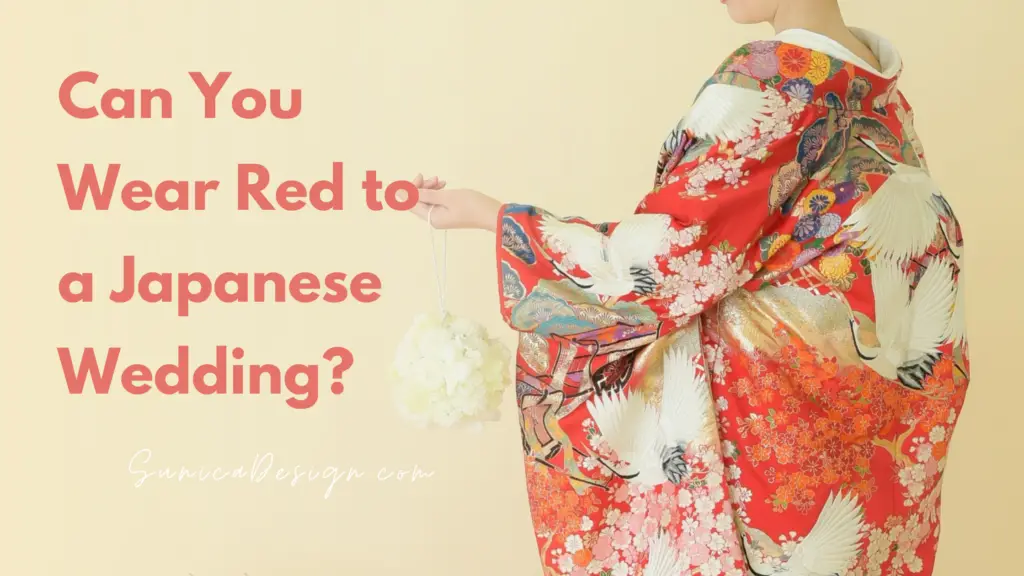
Colors to Avoid for Guests in a Japanese Wedding
If you’re planning to attend a Japanese wedding, there are specific colors you should avoid to respect the couple and the ceremony.
White
In Japan, the privilege of wearing white belongs solely to the bride. The traditional white dress, Shiromuku, has been used for weddings for hundreds of years in Japan. So, a guest wearing white to a traditional Japanese wedding may seem disrespectful to the bride and her family.
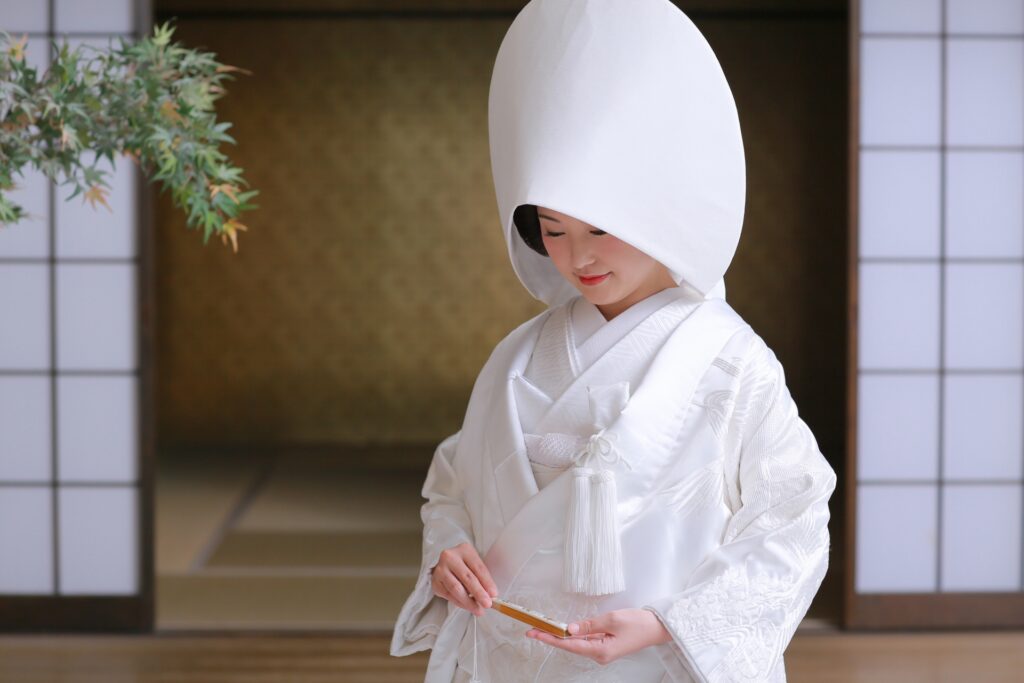
All-Black
An all-black outfit can seem like funeral attire in Japanese culture. However, the color black isn’t inherently inappropriate in Japan. According to a survey conducted by Wanpi Magazine, among 100 people who attended a wedding in Japan, the most common dress color was still black. They chose this color because it looks formal and elegant. They will select a shawl, corsage, and some other accessories to match the black dress so that it will not evoke somber vibes.
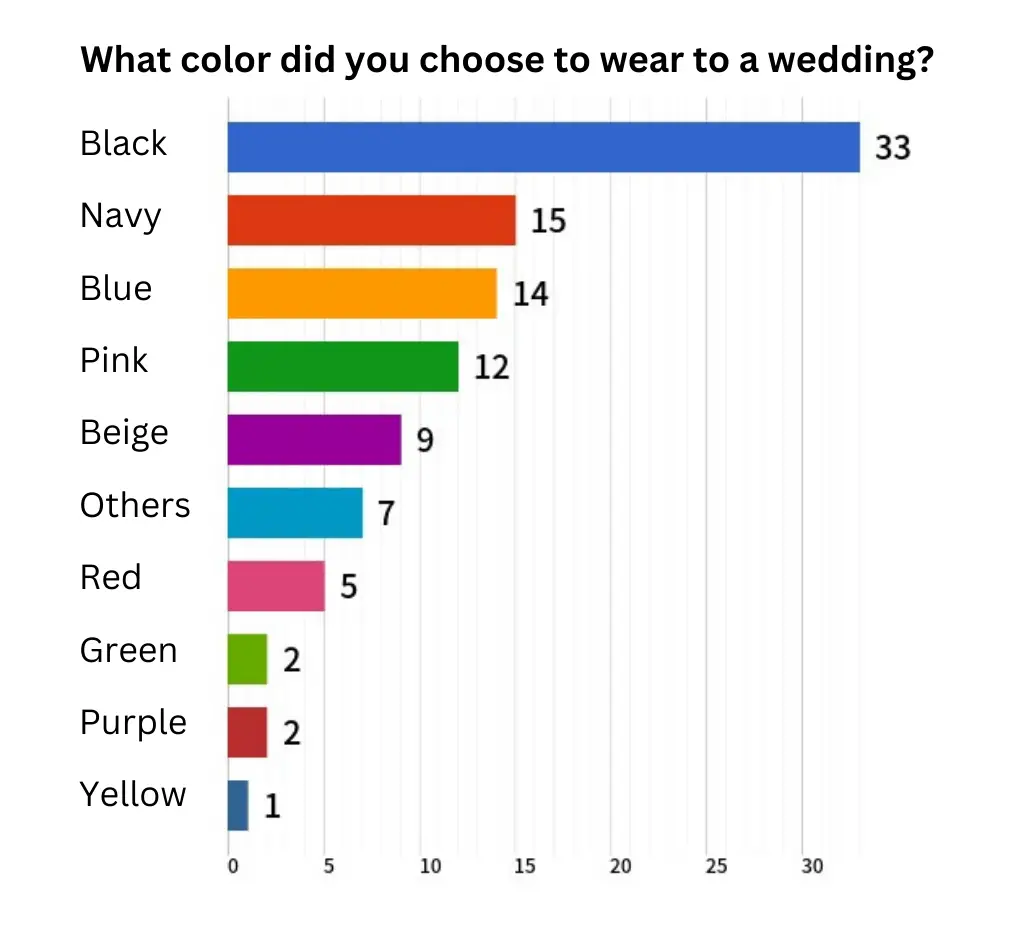
Bicolor
Dresses that feature two different colors, especially one at the top and another color at the bottom, can symbolize “separation” in Japanese culture. Although this kind of dress is stylish, it is said to bring bad luck to the wedding. Formal dresses are generally single-colored and plain, and it is okay to use a bolero, shawl, or any other accessories in a different color to complement them.
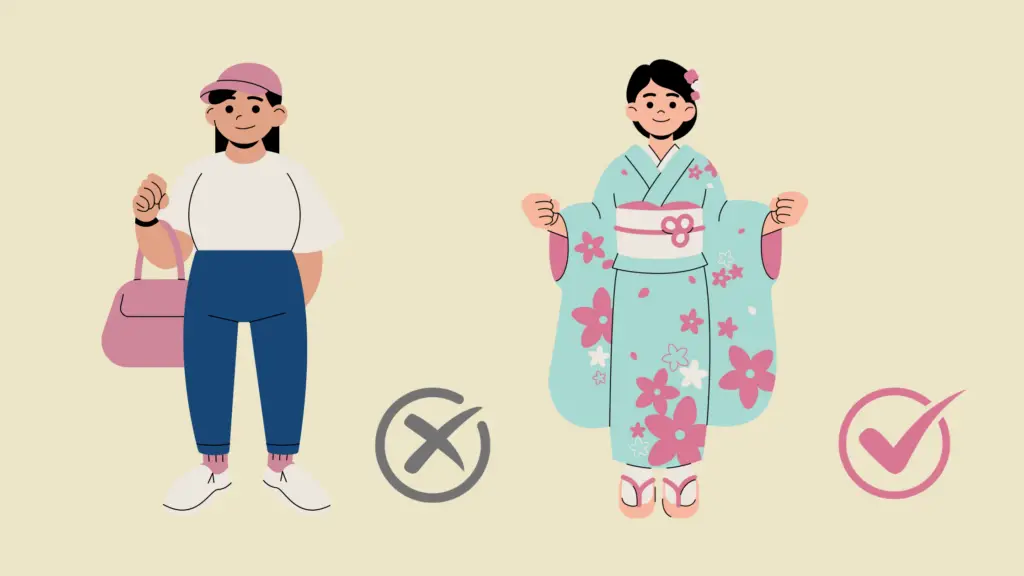
In a nutshell, you’re pretty much free to wear any color to a Japanese wedding, except for all-white, all-black, or two-tone outfits. So, yes, you can totally rock red! Just go for softer shades like burgundy or a muted pinkish-red to keep the spotlight on the bride and groom.
Check If the Bride Prefers Red Irouchikake
However, we have to say that red is not a “safe” choice. Besides Shiromuku, Irouchikake is also a popular bride’s dress in Japan, and the most trending color for Irouchikake is red.
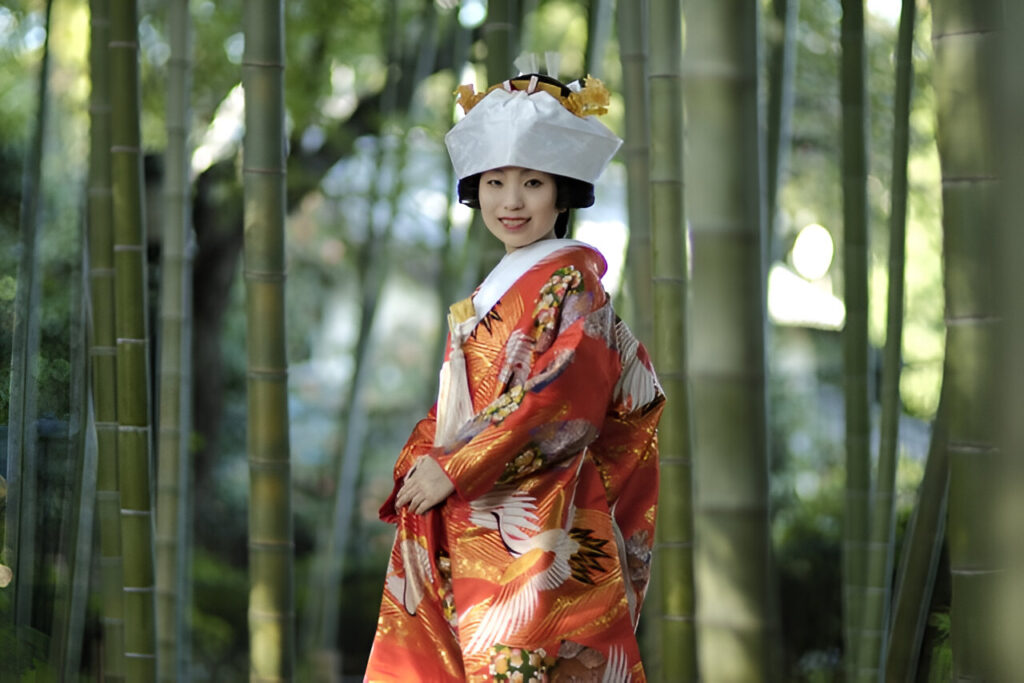
Red is a color that fully brings out the presence of the bride, who is the main character at a wedding. Plus, it’s got an awesome effect of making the area around the wearer’s face glow. It was also a color for celebratory occasions and royalty in ancient Japan. If a daughter wears the red Irouchikake inherited from her mother, it will never be out of fashion.
Therefore, while red is an attractive color, you may need think twice on whether or not to wear it to a Japanese wedding. If the bride chooses a red Irouchikake, your outfit in the same color could shift attention away from her. Try to reach out to the new couple or their family to ask about the wedding’s color scheme or the bride’s choice of attire.
Guests' Attire for Traditional Japanese Wedding
After discussing the colors to avoid at a Japanese wedding, let’s explore appropriate traditional Japanese attire for guests. The choice of clothing varies depending on your relationship with the new couple.
For Close Family Members
If you are close relatives of the newlyweds, like one of the parents of the couple, you could wear a black Tomesode with five family crests and gold or silver embroidered accessories. The ensemble signifies the highest level of formality and shows respect for the occasion. If the wedding is western style, you could wear a one-piece dress with sleeves longer than 3/4, ensuring not to expose too much skin.
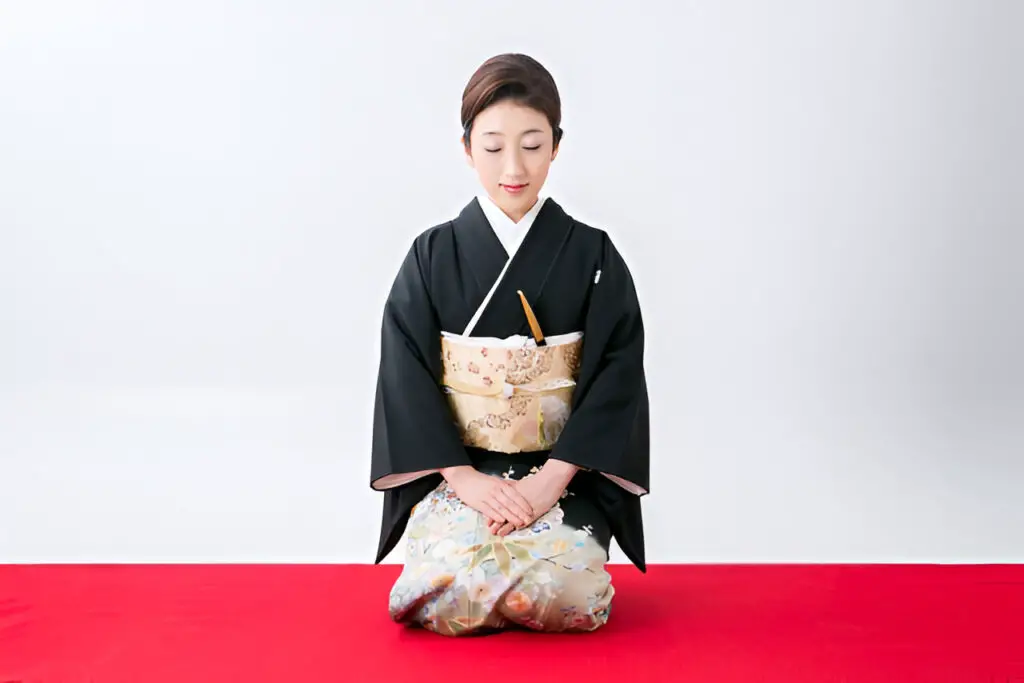
Besides, notice that the black Tomesode is often for married women. If you are not married, try a Furisode or colored Tomesode.
For men, you could choose a Haori with five family crests and a Hakama, which is a set of traditional Japanese formal dress for important men. You could also consider a morning dress or a tuxedo suit. Remember not to match a black shirt with a black tie because this combo may be too solemn. Try a pale gray vest or off-white bow tie to build up a happy and elegant vibe.
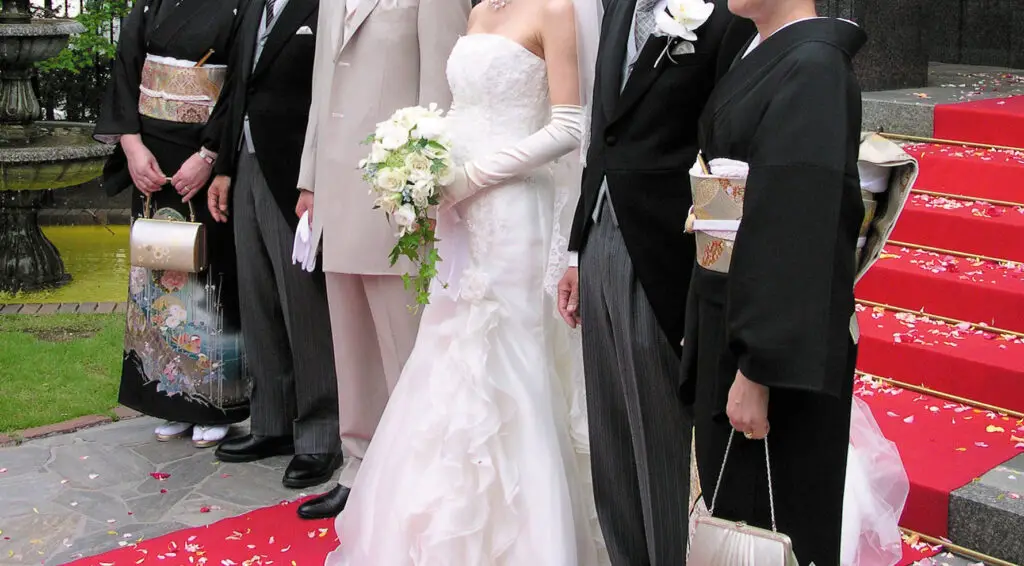
For Friends and Colleagues
If you’re invited as a friend or colleague, you could opt for a Homongi or Western suit. Homongi with traditional patterns and seasonal motifs, like cherry blossoms for spring or maple leaves for autumn, can add a unique flair to female outfits. Simple-designed Furisode with light colors is also great for young girls.
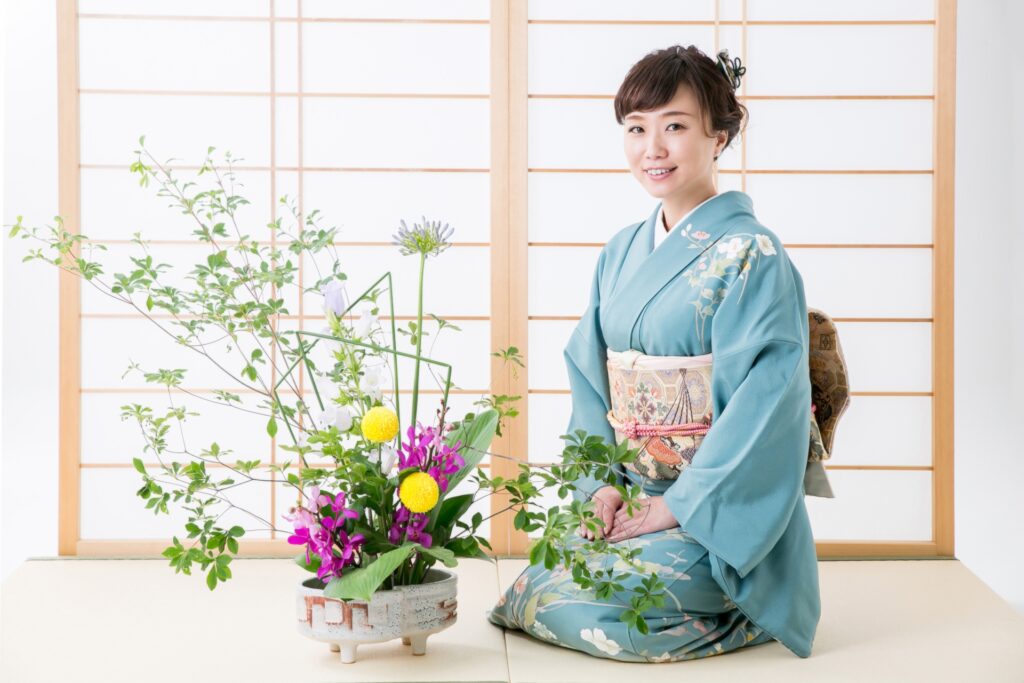
On the other hand, suits are the most common choice for male attendants in Japanese weddings. They are usually black, navy blue, or grayish, keeping modest and formal.
For a casual wedding, many people incorporate patterned accessories into their outfits. However, some families may not welcome animal skin patterns, such as leopard print, because they are related to killing animals.
Other Tips
- If you’re attending a traditional Japanese wedding, try not to wear sleeveless or low-cut dresses. The wedding may be hosted in a shrine, and it is not respectful to expose too much skin in front of benevolent spirits.
- Checking with the couple to coordinate whether Western or traditional attire before the wedding is a good way to avoid a mismatch in the atmosphere.
- Don’t make it flashy! Although the wedding is a good opportunity to try traditional Japanese attire, be subtle and modest because you do not want to draw attention away from the newlyweds.
Final Words
In conclusion, navigating the attire etiquette for a Japanese wedding can be a nuanced affair. While red is a captivating color that holds significant cultural weight, you may need to think twice before making the final decision. Always consult with the couple or their family about the chosen color scheme, especially if the bride opts for a red Irouchikake.
Just remember the golden rule: the key is to complement, not compete with, the couple’s spotlight. So, before you wear red to a wedding, a little research and thoughtful consideration can go a long way in making the celebration harmonious for everyone involved.
If you want to learn more about Japanese traditions and styles, welcome to our “Japanese Fashion” channel. Feel free to leave a comment if you have any questions or ideas~ We are always here to exchange brilliant thoughts!




